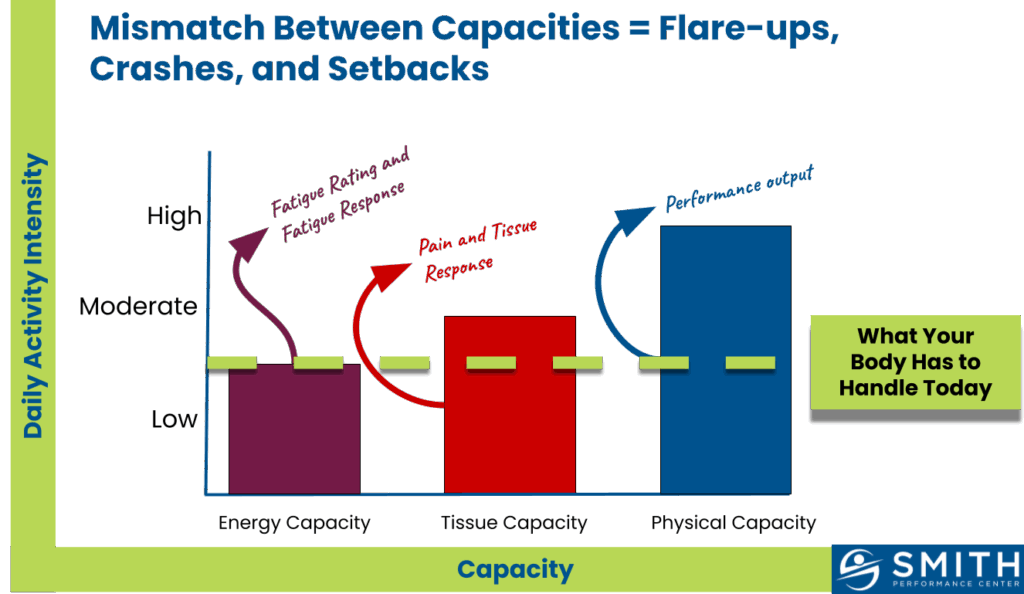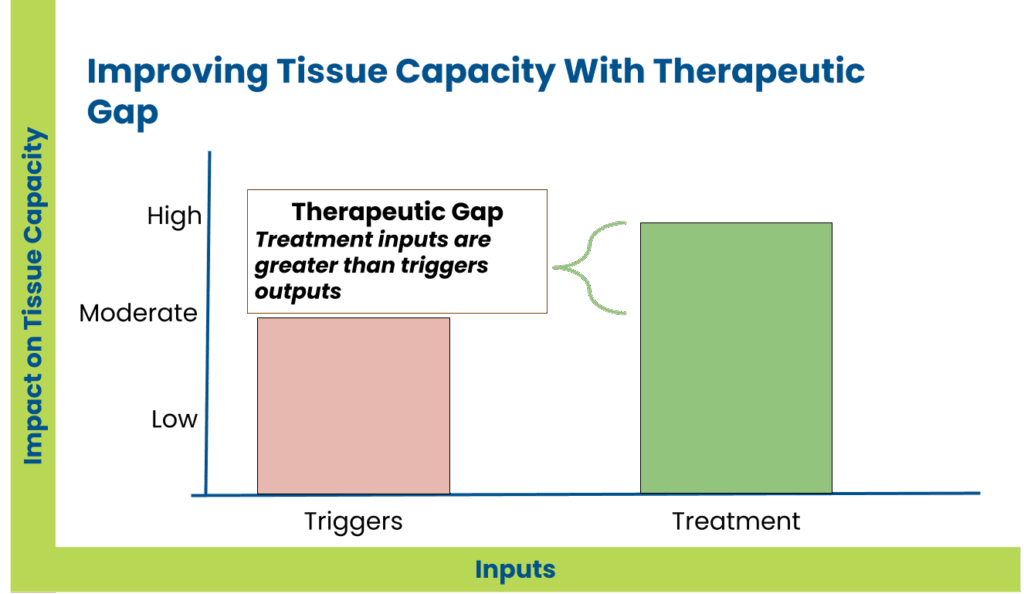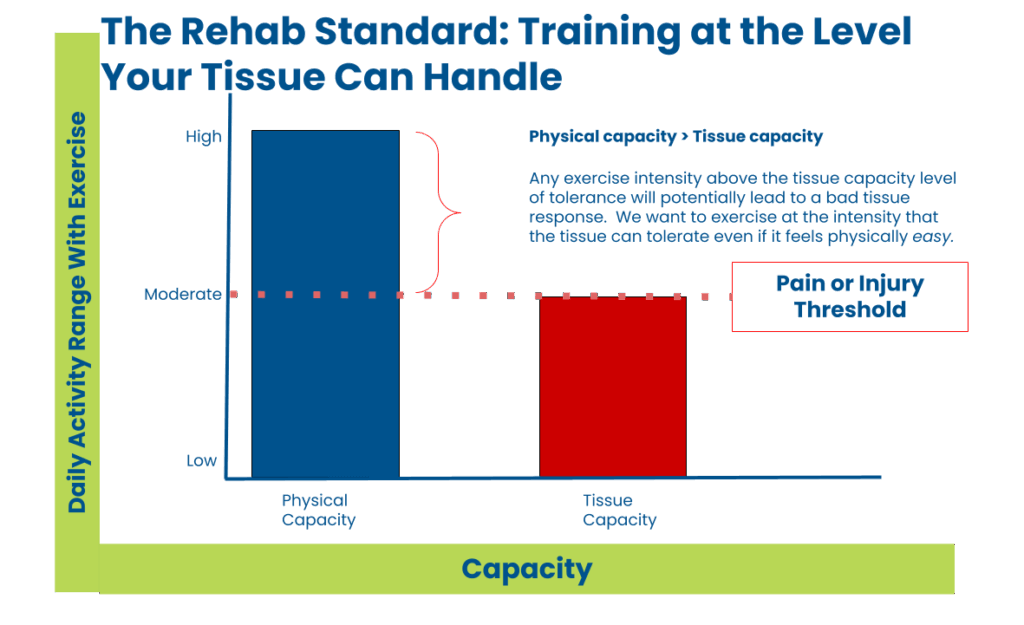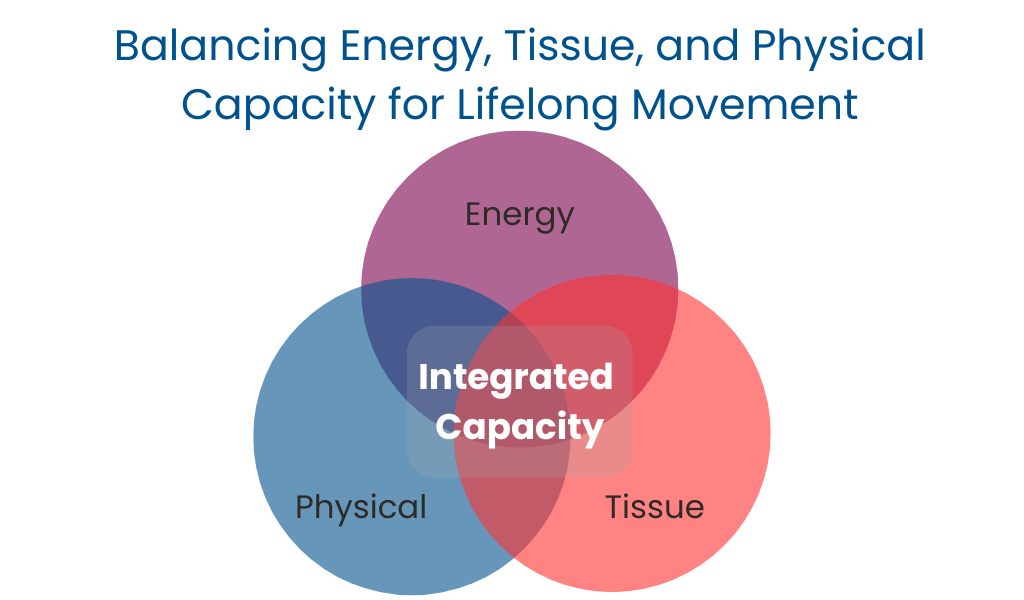The SPC Phase System: How We Rebuild Human Capacity Step by Step
The SPC Phase System is a capacity-based framework that connects rehabilitation, training, lifestyle, and nutrition into one clear process.
Each phase addresses a specific capacity challenge — from diagnosis and stabilization to full performance — allowing you to manage pain, rebuild strength, and sustain energy long-term.

System Based Rehab And Exercise
The SPC Phase System is a rehab and training system designed to rebuild and protect your body’s capacity — the foundation of movement, recovery, and performance.
Unlike traditional physical therapy programs, our capacity-based rehabilitation approach integrates strength training, lifestyle strategy, and energy management to create lasting results.
Each phase solves a specific problem — from diagnosis and stabilization to performance — guiding you through a clear, measurable process that restores your ability to move, live, and train at your best.
- What are the phases at Smith Performance Center?
- Four Reasons Why Patient Forms Help Improve Your Care During Your Rehab Process
- 5 Rehab Mistakes and How to Solve Them
- The 5 Big Problems Facing Clients with Pain and Injury Who Want to Get Back to an Active Lifestyle
- What are the 3 major issues in physical therapy and exercise?
- Total Knee Case Study: Why You Need A Structured Rehab Process
- Triathlon Injury Rehab: How SPC Phases Prevent Setbacks

#1. Diagnose Capacity Issue
Every client begins from a different capacity starting point — pain, fatigue, or simply a lack of strength or consistency. The first step in the SPC System is to identify which capacity is limiting progress:
tissue, energy, or physical.
Each capacity requires a different first action. A tissue limitation may call for a focused home plan to stabilize and test tolerance. Low energy may need recovery and lifestyle adjustments. A physical limitation often begins with a workout in the SPC app to rebuild skill and training volume.
These capacities interact constantly. A mismatch — such as training harder than tissue can tolerate, or exercising while energy reserves are depleted — creates flare-ups, fatigue, or early burnout.
During this phase, we use structured assessment and discussion to confirm where the mismatch exists and design the right starting plan. Whether that plan looks like a home program, a workout progression, or a lifestyle focus, the goal is the same: gain clarity about what’s limiting you and create the first measurable improvement in capacity.
- Steps To Develop A Diagnosis In Physical Therapy
- Why You May Struggle To Get A Diagnosis And The Right Treatment At Physical Therapy
- How to Find the Real Cause of Pain: Our 4-Pillar Diagnosis Process
- The 5 Patient Responses That Should Impact Your Physical Therapist’s Strategy
- 5 Treatment Options to Reduce Knee Pain without Surgery, Injections, or Drugs
- Trigger Management: Why physical therapy exercises are not enough to get you better?
- 7 Signs Your Heel Pain Is Not Coming From Your Plantar Fascia
- When and where you feel foot pain during walking is key for diagnosis
- Why Your Hamstrings Always Feel Tight (and Why Stretching Isn’t Solving It)

#2. Capacity Stabilization
Once the problem is clearly identified, the next step is to stabilize capacity so your system becomes predictable.
This phase focuses on reducing reactivity — whether that means calming irritated tissue, improving recovery habits, or balancing daily stress and energy output.
We introduce consistent movement patterns, sustainable loading, and supportive lifestyle strategies. These stabilize the foundation so your body can adapt without repeated setbacks.
The goal is control, not intensity. By removing volatility and building steadiness in both your body and routine, you create the conditions for real progress in later phases. Stabilization turns unpredictable symptoms into reliable feedback — a prerequisite for advancing from rehab into structured training.
- The 7 Home Plan Mistakes Ruining Your Progress in Physical Therapy
- The Key Reasons Why the Home Plan Is Vital for Success in Physical Therapy
- The 5 Components of Invisible Triggers That Cause Your Rehab Progress to Stall
- 7 Tools to overcome invisible triggers stalling your rehab progress
- 4 Ways Individuals With Heel Pain Can Make Their Pain Go Away
- 5 Contributors To Your Running Form That You May Be Missing
- Why Your Hamstrings Hurt After Stretching (and What’s Really Going On)

#3. Capacity Progression
With stability established, the next goal is to build capacity — safely expanding what your body can handle in load, energy, and complexity.
In this phase, we reintroduce progressive stress through training principles that match your current capacity. Strength work, conditioning, and movement variability are layered in gradually to ensure that tissue tolerance and energy recovery improve together.
Progression is guided by key signs — the specific feedback patterns that tell us when your body is adapting or nearing overload. This allows us to fine-tune volume, rest, and exercise selection in real time.
As physical capacity rises, so does energy stability and confidence. You begin to move from a rehabilitative mindset to a training framework, where the body isn’t just pain-free — it’s capable, durable, and ready for higher-level performance.
- From Pain to Progress: Building an Exercise Habit After Injury
- Understanding and Managing Flare-Ups During Rehabilitation
- Tissue Capacity vs. Exercise Capacity: Why Most People Miss the Mark
- The 6 Functional Exercises Tested During a Movement Assessment
- The 8 Reasons All HHP Clients Go Through a Movement Assessment
- The Most Useful Tools for Progressing Your Workouts After an Injury
- The 7 Tissues to Consider When Progressing Activity After Physical Therapy
- The Injury Types That Are Mismanaged During Activity Progression
- The 4 Primary Goals In Strength Training When Struggling With An Injury or Pain
- The Unique Training Variables Used By Our Team To Improve Workout Success

#4. Monitor, Maintenance, and Performance
Capacity is not a finish line — it’s a system that’s sustained, monitored, and refined over time.
In this phase, we focus on maintaining balance between energy, tissue, and physical capacities. Training intensity, recovery strategies, nutrition, and lifestyle habits are adjusted as life evolves.
Relapses or regressions are not failures — they’re feedback signals. Regular check-ins, open clinics, and performance assessments allow us to detect those signals early and make small corrections before major setbacks occur. This is how long-term movement and health are preserved.
- Unlocking Your Health Potential: The SPC Phase Concept of Exercise, Maintenance and Monitoring
- The Principle of Progression in Strength Training
- The 5 Common Modifiable Variables For Programming A Great Workout and Program
- Optimizing Your Strength Training: Understanding the Importance of Deload Weeks At Smith Performance Center
- Optimizing Your Strength Training: The Role of Open Clinics at Smith Performance Center
- 11 Reasons Personal Training With Our Strength Coaches Is The Right Choice For You
- The 4 Reasons Exercise is Hard to Start and Maintain
- Maximize Your Season: Structuring Endurance & Strength Training with Three Key Questions

